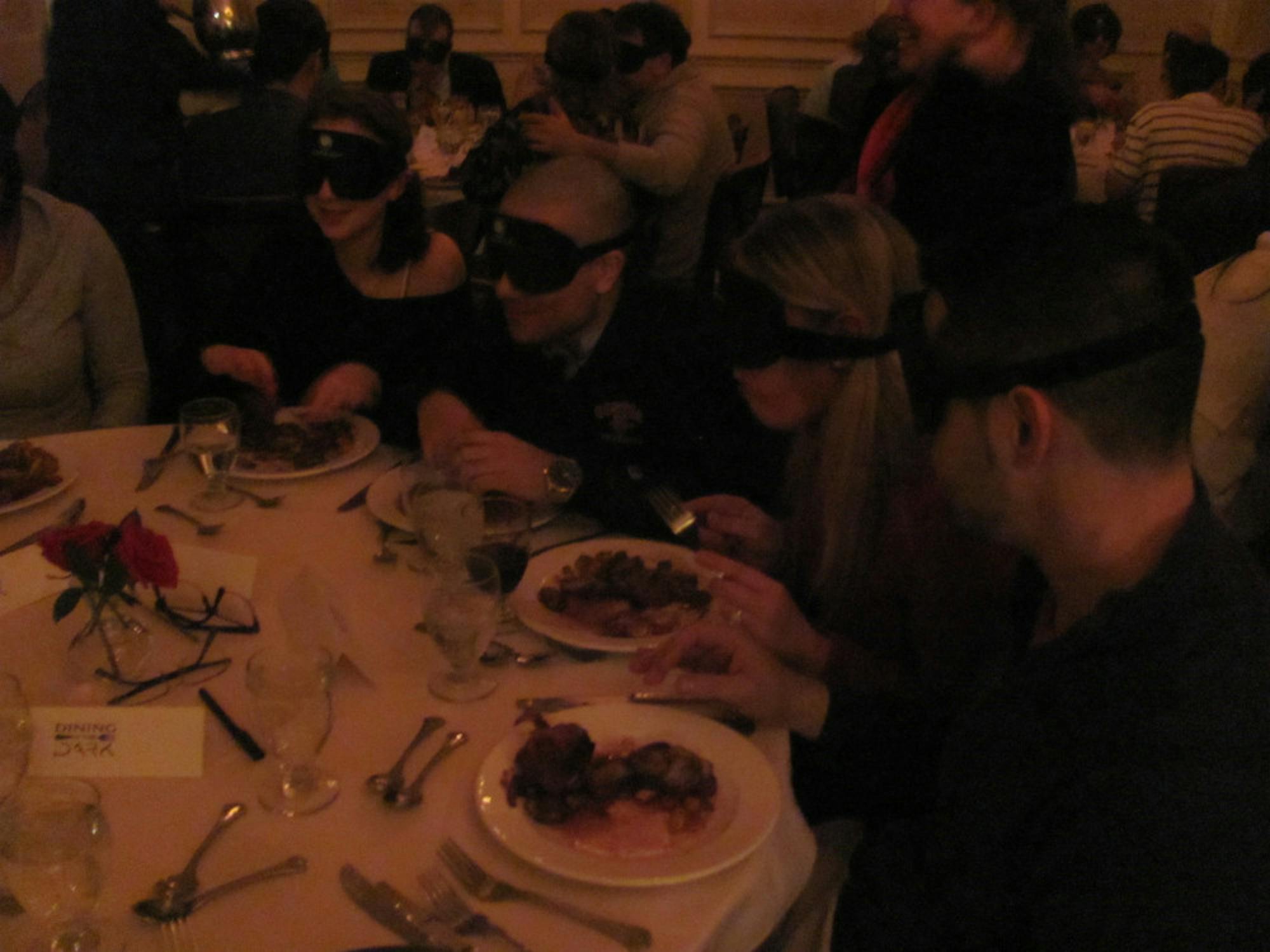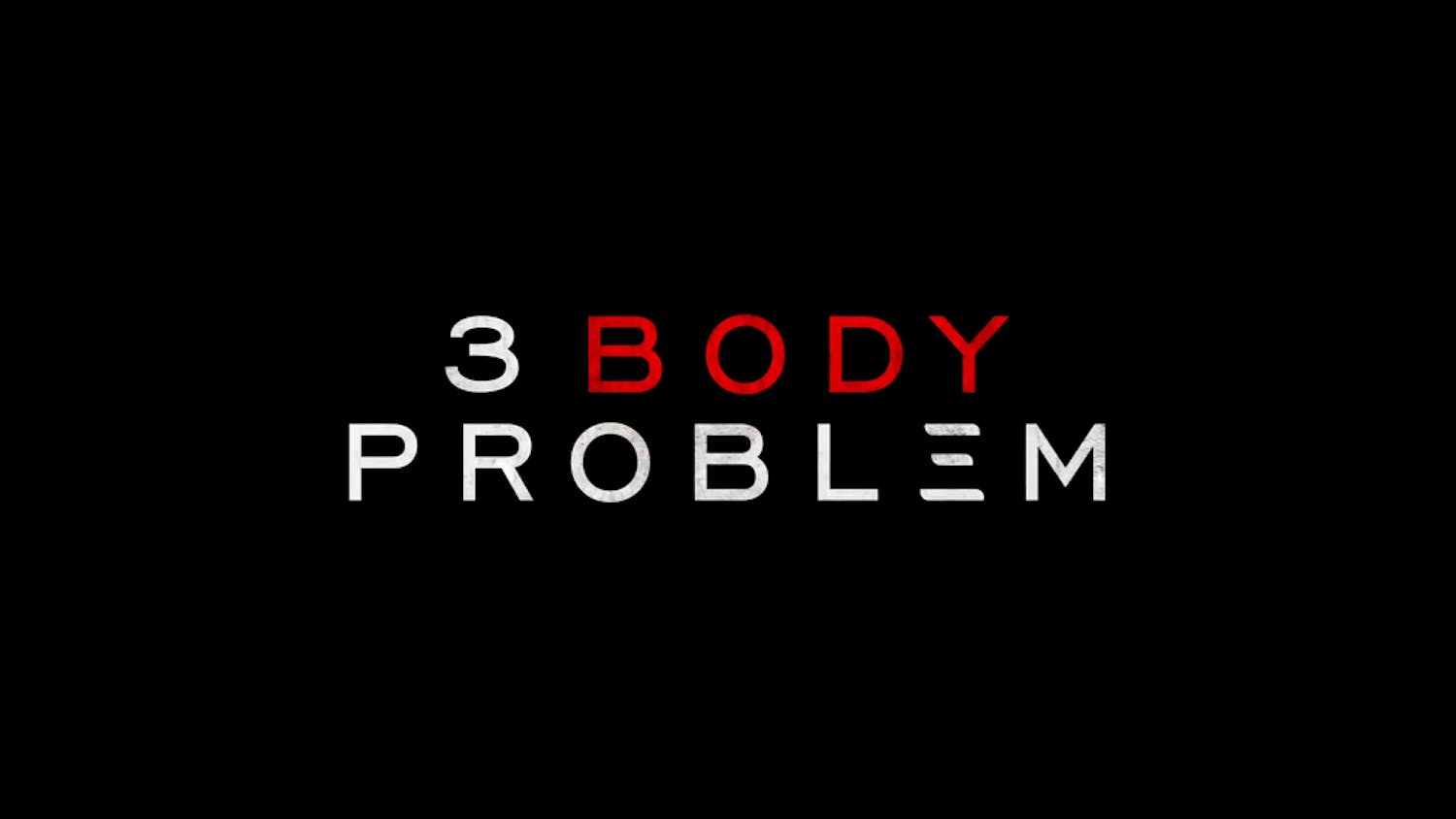Walking up the beautiful staircase to the top floor of Hampshire House, a Beacon Hill mansion, the unsuspecting patron would assume nothing more was in store than a nice dinner accompanied by some soft piano music and perhaps a cocktail or two. While all of these features were part of the experience this past Friday night, diners were also treated to the added bonus of a blindfold to be worn throughout all four courses of the meal. Though this was Valentine’s Day weekend, the Hampshire House staff was not hoping for patrons to engage in any activities à la “Fifty Shades of Grey” (2015), at least while they were still at the mansion (the Master of Ceremonies couldn’t help but reference the franchise when she told diners they unfortunately couldn’t leave with the blindfolds at the end of the night, but nevertheless alluded to the fact she hoped they had something similar waiting at home).
This was Dining in the Dark. The Daily had the chance during cocktail hour to sit down with Markus Ripperger, corporate executive chef at the Hampshire House, to learn how this experience came to Boston and what the chef was hoping diners would gain from the meal.
“I was visiting my folks in Switzerland, and obviously they have the "blindekuh" [Blind Cow] over there and we went and experienced that whole thing, and I said 'Wow, that could be a fun little thing to do here at the Hampshire House.'" Blindekuh is a restaurant in Zurich and Basel, Switzerland where diners are served in the dark, claiming to be "the world's first ... restaurant in the dark."
Though Ripperger thought the experience was worth replicating, he knew he wanted to enhance the dark dining experience in a way that embraced the opportunity to not only take away one of the senses -- sight -- but to add to the other senses as well.
“I thought there was something missing, because you're missing a sense so every other sense that you use kind of [goes] on overdrive," he explained. "So I partnered with TeamBonding and I said, 'Hey, what can we do with this to make it really fun and to make it interesting?' They wrote a script, basically a story that goes along with the menu, music and entertainment and whatnot. It kind of brings you into a different element."
With David Goldstein, the founder of TeamBonding, Ripperger created the menu for the first dark dining experience in Boston, held on Halloween 2010. The Daily also had the chance to chat with Amy Craig of New England Fun, another company under Goldstein's direction. She elaborated on many of the same points as Ripperger.
"The thing that people don't get about this is that there are restaurants all around the world that have blackouts [dark dining experiences] … but they're not committed to the sensory heightening," she said. "This is much more along the lines of performance art that is intended to heighten your awareness and your senses, with the exception of sight."
As cocktail hour ended, guests moved into a beautiful dining space that was adorned with chandeliers and roses placed in small glass jars atop the fireplace mantle. Once patrons were seated, The Master of Ceremonies encouraged everyone to put on their blindfolds, which were actually quite comfortable spa masks. She -- the Master of Ceremonies -- proceeded to start with the first of a series of stories introducing each course. This turned out to be the least satisfying aspect of the experience. While clues embedded in the stories, such as a reference to a trilogy of soups, gave diners helpful indications as to what they were about to eat, overall the stories felt very cliché and lacking the creativity one would expect with the $75 price tag for the dinner.
This brings up another point: While Ripperger noted he “played around with a lot of flavors, a lot of textures” in the creation of the menu, here the creativity also felt somewhat lacking. Though it makes sense that the menu would avoid being too adventurous since diners cannot see the food they are consuming, it would be a more enticing dining experience to have stronger and sharper flavor combinations. Thus, a chocolate-dominated dessert course felt too predictable for a Valentine’s Day dinner.
It also was frustrating that, unless one lifted part of their blindfold to peek at their dinner, they couldn’t be entirely sure they ate everything on their plate. Additionally, for a romantic weekend, it was odd that couples were seated at community tables. The timing felt rushed, as servers kept each table more or less on the same schedule with each course, prohibiting diners from taking their time. Overall, while the concept of dining in the dark is fun in theory, the whole effort felt flavorless and stale.
Dining in the Dark loses sight of creativity

Blindfolded patrons got to sharpen their other senses during Dining in the Dark at Hampshire House.





